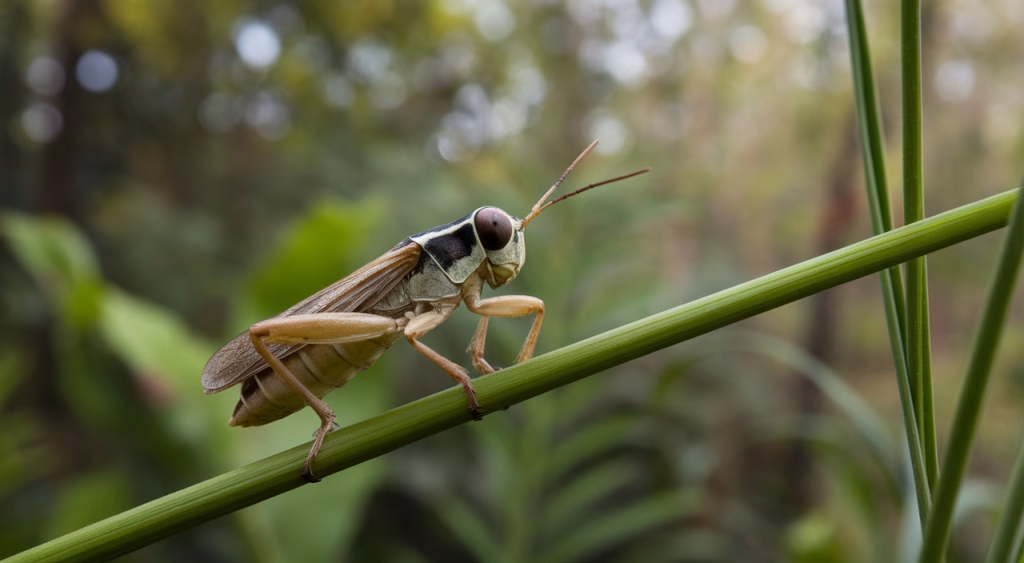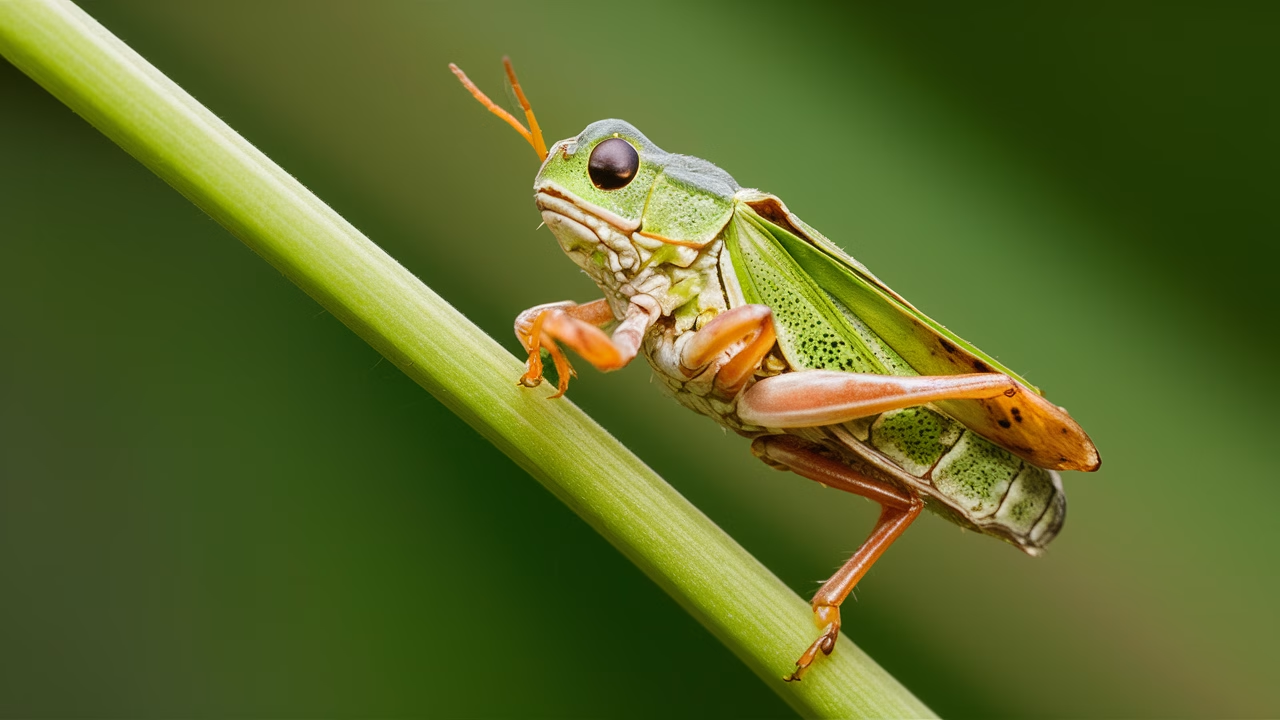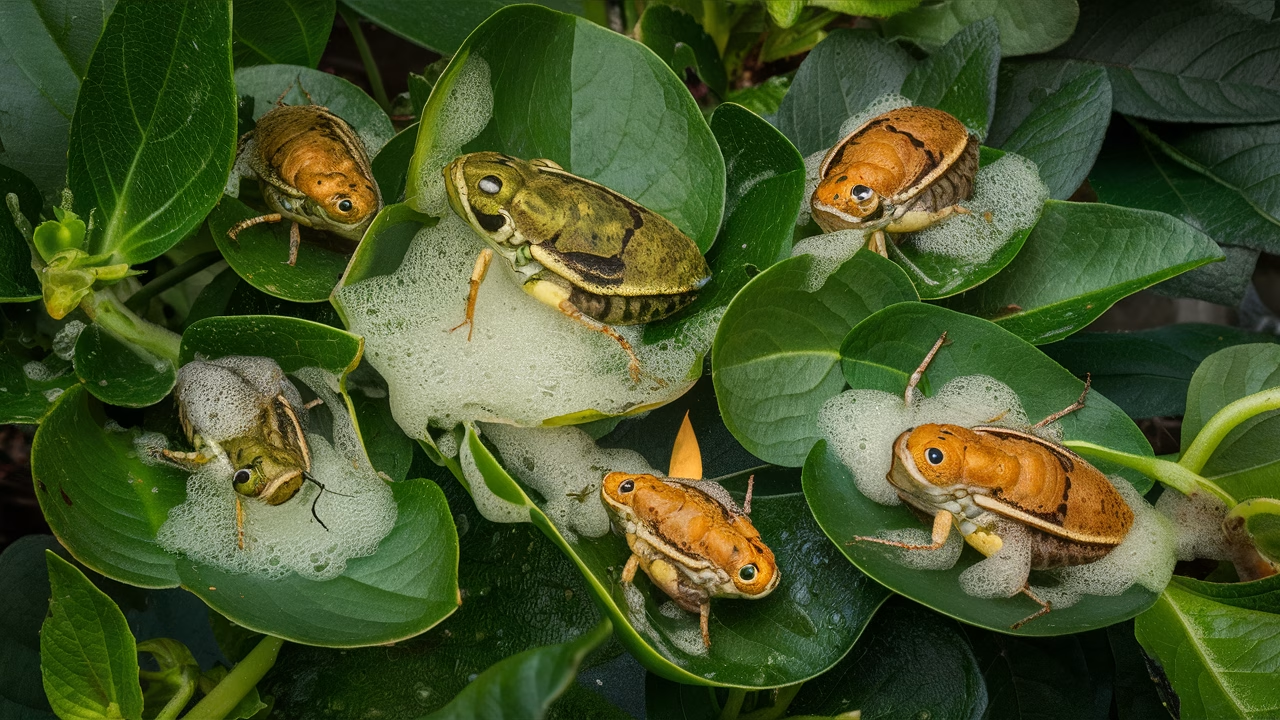How far can froghoppers jump—and what makes them the fastest leapers in the insect world?
Froghoppers, also known as spittlebugs, can jump over 100 times their body length—making them the top contenders for the title of Earth’s most powerful insect jumpers, relative to their size. For an insect barely 6mm long, that’s the equivalent of a human leaping over the Eiffel Tower in a single bound. Their extraordinary froghopper jumping ability isn’t just record-breaking—it’s rooted in finely-tuned anatomy and split-second physics that showcase incredible insect jumping power.
TL;DR: Why Froghoppers Are Nature’s Spring-Loaded Superstars
- Elite Insect Jumpers: Froghoppers can launch themselves over 100 times their body length.
- Incredible Acceleration: Their jump thrust is generated in under a millisecond.
- Specialized Anatomy: Their hind legs have a unique catapult-like mechanism that stores and releases energy.
- Ecological Role: Despite their superstar abilities, they play crucial roles in ecosystems as plant feeders and prey.
- Fascinating Behavior: Learn how they live, reproduce, and interact with their environments.
The World of Froghoppers
The Science Behind Their Incredible Jumps
Let’s compare raw jumping prowess among nature’s acrobatic insects. While a flea might jump 50 times its length and a grasshopper 20, froghoppers routinely reach 100 to 115 times their body length jumping ratio. That’s thanks to a catapult-style launch mechanism hidden in their hind legs that demonstrates unmatched insect jumping power.
Before takeoff, froghoppers crouch and compress an internal spring-like structure made of resilin, a rubbery protein found in many insects. When they release this stored energy, it all happens in less than a millisecond—resulting in ground reaction forces that can reach over 400 times their body weight. It’s insect acceleration at its finest, showcasing why we often ask “how far can froghoppers jump” with such amazement.
Adaptations for High-Flying Acrobatics
This froghopper jumping behavior isn’t just about distance—it’s about survival. Froghoppers don’t rely on wings to escape predators; they disappear into tall grass or leaf litter in a blink. Their large femurs contain massive trochanteral depressor muscles—the engine behind the lift. The force is transmitted through a nearly frictionless joint, and the timing is so precise that both legs launch nearly simultaneously to avoid spinning in midair.
These biomechanical wonders make them elite acrobatic insects with aerial performance that baffles even robotic engineers attempting to mimic their jump precision and power-to-weight ratios. Understanding froghopper behavior reveals how evolution perfected this remarkable jumping mechanism.
Froghopper Behavior and Biology
Diets, Habitats, and Life Cycles
Froghoppers start life as nymphs embedded in a ‘spittle mass’—a frothy secretion on plant stems that gives them their nickname, spittlebugs. This foam insulates them from temperature extremes and predators while they feed on plant sap. Adult froghoppers shift to a more mobile lifestyle, using their incredible jumping abilities to move plant to plant in search of food, shelter, and mates.
They’re polyphagous, meaning they feed on a wide range of plants—from grasses and garden herbs to shrubs and trees. You’ll most often spot these insect jumpers on herbaceous plants, especially where moisture is high and predator cover is abundant. Their froghopper behavior adapts perfectly to these environments.
Reproduction and Social Interactions
Froghopper courtship reveals fascinating aspects of froghopper behavior. Males tap out vibrational signals onto plant stems, which females pick up through their legs thanks to highly sensitive substrate sensors. If a female is interested, she’ll answer with reciprocal signals, allowing the pair to find each other without relying on their famous jumping abilities for navigation.
Once mating occurs, females deposit eggs into plant tissues, and within weeks, the next generation of future insect jumpers is already tucked into their spittle shelters, preparing for a gravity-defying life that will showcase remarkable body length jumping ratios.
Fun Facts and Fascinating Discoveries
Unique Features and Abilities
Beyond their jumping mastery, froghoppers possess other fascinating features that complement their status as premier acrobatic insects:
- Hydraulic legs: Their legs are pressurized by fluids that contribute to their explosive insect jumping power.
- Camouflage: Their earthy shades perfectly blend into stems and leaves, making them almost invisible.
- Waterproofed bodies: Their exoskeletons resist wetting, keeping them airborne even in humidity.
And here’s a curious note about froghopper jumping behavior: despite being expert leapers, froghoppers can’t always control where they land! Their aim is survival through distance—not direction.
Surprising Roles in Nature’s Ecosystem
While many think of them as crop pests, froghoppers are foundational creatures in food webs. They feed birds, frogs, spiders, and other predatory insects. Plus, their plant-sap feeding benefits ecosystems by promoting healthy plant metabolism through pruning and sap flow alterations—a lesser-known aspect of froghopper behavior.
They’ve also become valuable model organisms for understanding biomechanics across disciplines—from evolutionary biology to materials science and robotics. Researchers studying how far can froghoppers jump continue uncovering secrets that inspire engineering innovations. These acrobatic insects are doing scientific heavy lifting while leaping into our hearts (and gardens).
Cost Guide: What It Takes to Study Froghoppers Professionally
| Item | Estimated Cost |
|---|---|
| Field collection gear | $150–$300 |
| Stereomicroscope | $500–$2,000 |
| High-speed camera (for jump analysis) | $1,500+ |
| Lab management and field permits | $100–$500 annually |
| Scientific reference books and journals | $50–$200/year |
Final Thoughts
In the world of champion insect jumpers, froghoppers leap straight to the top with their incredible body length jumping ratio and remarkable froghopper behavior. Their precision, insect jumping power, and curious biology make them one of nature’s most fascinating miniature marvels. Whether you’re an aspiring biologist or just a casual observer of nature’s wonders, the next time you see a bit of foam on a plant stem or witness these acrobatic insects spring into the air—know you’ve glimpsed a true jumping champion at its best.
Frequently Asked Questions
- Are froghoppers dangerous to humans?
- No, froghoppers are harmless. They feed on plant sap but don’t bite or sting humans.
- Do froghoppers fly as well as jump?
- Yes, they have functional wings and can fly, but they prefer to jump for quick escapes.
- Why is froghopper foam important?
- The foam protects nymphs from predators and extreme temperatures while they feed and grow.
- How can I observe froghoppers in the wild?
- Look for their spittle masses on plant stems in moist meadows, gardens, or under shady foliage.
- Can froghoppers damage crops?
- Heavy infestations can stress plants, but their impact is usually minimal unless in large agricultural settings.
- What’s the difference between a froghopper and a grasshopper?
- Froghoppers are much smaller, rely on sap feeding, and have a different jumping mechanism than grasshoppers.
- Why do scientists study froghopper jumps?
- Their leap mechanics offer insights into biomechanics and help design efficient robotic systems.





